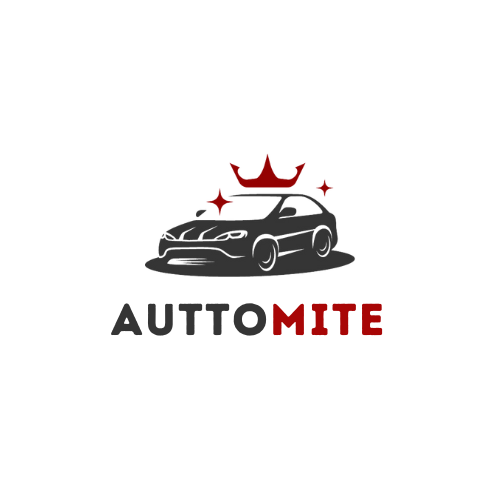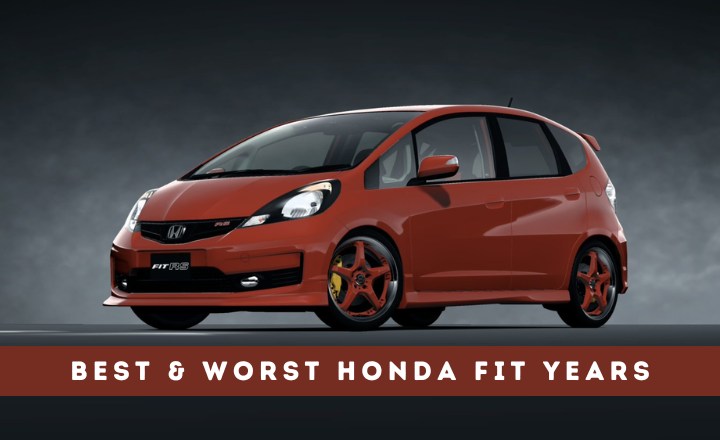The Honda Fit has been popular among subcompact car enthusiasts for over a decade. It offers practicality, fuel efficiency, and fun-to-drive dynamics.
You’re seeking a budget-friendly runabout, and knowing which ones fall short is crucial for making an informed purchasing decision. Potential buyers and current owners are left wondering what the Best & worst Honda Fit Years are.
Honda Fit Generations
The first generation, introduced in 2001, set the bar high with its versatile Magic Seat and efficient use of space. The second generation caught attention with its sportier design and improved cabin refinement.
The third generation continued to impress, adding advanced technology and safety features while maintaining the Fit’s nimble handling.
Here is a brief overview of the different iterations of the Honda Fit available in North America from 2007 to 2020.
| Generation | Years |
| 1st generation (GE1/2/3) | 2007-2008 |
| 2nd generation (GE6/7/8/9) | 2009-2013 |
| 3rd generation (GK/GH/GP) | 2015-2020 |
Honda Fit Best, Neutral, and Worst Years
Our evaluation considers various factors and references, encompassing various parameters and sources, to assess the Honda Fit’s top, middle, and bottom-performing years.
- Reliability reported by owners
- Yearly upkeep expenses
- Safety evaluations
- Satisfaction ratings from Consumer Reports owners
- Recalls, investigations, and complaints by NHTSA
- Owner ratings from Edmunds.
The chart illustrates the aggregated ratings from all the previously mentioned sources, offering a complete summary of each year’s performance.
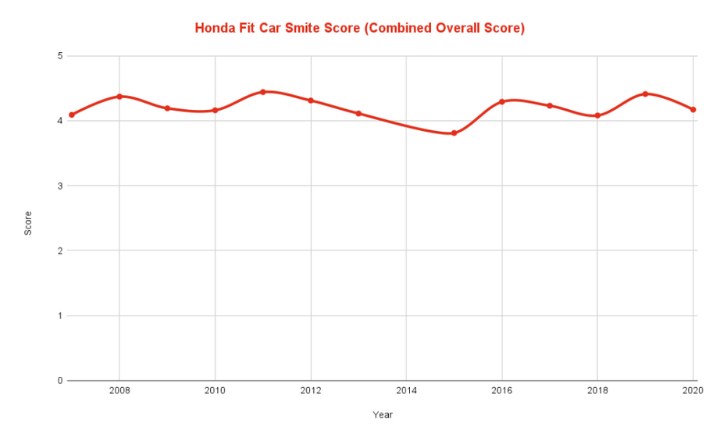
According to the overall data, this table classifies the Honda Fit’s model years as top-performing, average, or underperforming.
| Generation | Best Years | Neutral Years | Worst Years |
| 1st generation | 2008 | N/A | 2007 |
| 2nd generation | 2011 2012 | N/A | 2009 2010 2013 |
| 3rd generation | 2016 2017 2019 | 2018 2020 | 2015 |
Best & Worst Years for Honda Fit 1st Generation (2007-2008)
The first generation Honda Fit, launched in 2007, experienced mixed reviews from consumers and experts alike.
The Best Years: 2008
The 2008 Honda Fit, with its remarkable fuel efficiency, remains a standout choice even today. Its 1.5-liter i-VTEC engine paired with the five-speed manual or automatic transmission gives the Fit an edge in the compact car segment.
This combination offers lively performance and maximizes fuel economy, making it an ideal option for urban commuters and long-distance travelers.
With its innovative Magic Seat system, this little car boasts an adaptable interior that can accommodate various cargo shapes and sizes, setting a new standard for utility.
Whether a weekend trip to the hardware store or a road trip with friends, the 2008 Honda Fit is more than just a fuel-efficient commuter. It’s a versatile and reliable companion for diverse lifestyles.
The Worst Years: 2007
The year 2007 was rough for Honda Fit, as it began a series of massive recalls that continued to haunt the company in later years.
The recalls were primarily related to potential passenger frontal airbag inflator malfunctions, which had the alarming risk of exploding and causing harm.
This issue raised serious safety concerns and significantly damaged Honda’s reputation for producing reliable and durable vehicles.
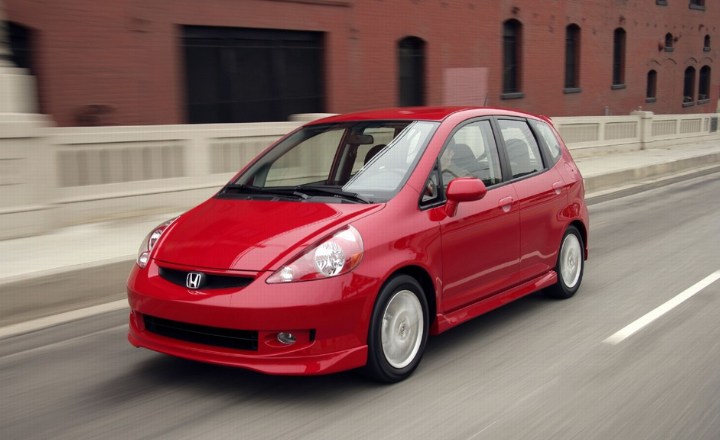
As the recall announcements continued into 2016, 2017, and 2019, it became evident that resolving this major issue was proving to be a significant challenge for Honda.
While the company tried proactively addressing the problem, these recurring recalls undoubtedly impacted consumer trust and confidence in their products.
The unfolding saga of ongoing recalls highlighted not only the technological complexities involved but also shed light on how far-reaching consequences can be when such issues are not addressed effectively.
Best & Worst Honda Fit Years 2nd Generation (2009-2013)
The second generation of the Honda Fit, from 2009 to 2013, has had its share of highs and lows.
The Honda Fit Best Years: 2011, 2012
The Honda Fit’s 2011 and 2012 models, thanks to their outstanding fuel efficiency, marked a turning point in the subcompact car segment.
According to Consumer Reports, with the 1.5-litre engine combined with the five-speed automatic transmission, the Fit delivered an impressive 21 mpg in city driving and an outstanding 39 mpg on the highway.
This exceptional fuel economy made the Fit standout for drivers seeking both performance and cost-effectiveness, setting a new standard for its class.
These model years showcased Honda’s commitment to engineering excellence by seamlessly integrating power and efficiency without compromising driving dynamics.
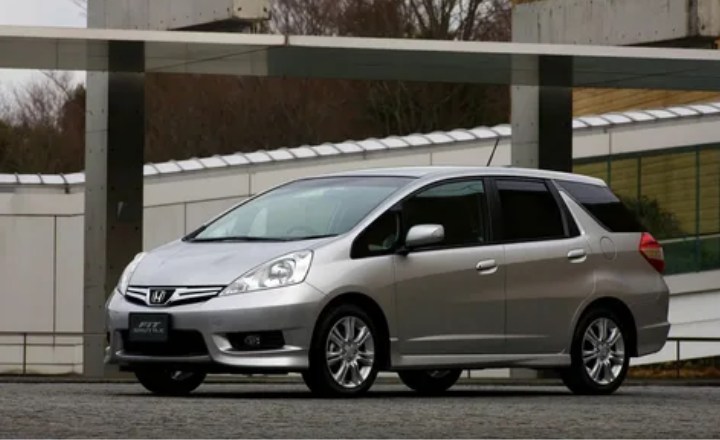
The smooth and responsive transmission paired with the efficient engine allowed for effortless acceleration while maintaining remarkable fuel economy figures.
Drivers enjoyed exceptional gas mileage and a spirited driving experience that set the Honda Fit apart from other vehicles in its category.
The Honda Fit stood out in its class for its clever use of space, versatile cargo capabilities, and fuel efficiency. These attributes made it attractive for those seeking a practical yet enjoyable driving experience.
The Worst Years: 2009, 2010, 2013
There are many Honda Fit years to avoid, and the 2009 Honda Fit unfortunately faced a common issue with its air conditioning system. Many owners reported problems such as the AC not cooling properly or completely failing.
This was a significant headache for drivers, especially in hot climates where AC is essential. Despite its otherwise stellar reputation for reliability, the 2009 model year left many owners frustrated and seeking costly repairs.
In 2010, Honda Fit owners encountered widespread complaints about suspension issues. The car’s suspension was prone to premature wear and failure, resulting in a bumpy and uncomfortable ride for many drivers.
This was an unexpected letdown for an otherwise well-regarded compact car that had garnered praise for its handling and agility.

Fast forward to 2013, an unfortunate trend continued with numerous reports of transmission problems plaguing Honda Fit owners.
Many experienced slipping gears, rough shifting, or complete transmission failure, leading to sluggish performance and costly repair bills.
This tarnished the reputation of what was supposed to be a reliable and practical choice in the subcompact segment.
Worst & Best Years For Honda Fit 3rd Generation (2015-2020)
The 3rd generation Honda Fit, from 2015 to 2020, has seen its fair share of highs and lows. These models are mentioned in detail regarding the best years for the Honda Fit.
The Best Honda Fit Years: 2016, 2017, 2019
2016 was the best year for Honda Fit, which received a major refresh with its bold exterior styling and impressive interior space.
The addition of advanced safety features and innovative technology made the 2016 model stand out in its class, appealing to urban commuters and small families.
With its nimble handling and fuel-efficient engine car, the 2016 Honda Fit became a top choice for those seeking a versatile, fun-to-drive vehicle.
Moving on to 2017, Honda continued to elevate the appeal of the Fit by introducing even more standard features across all trim levels.
The introduction of Apple CarPlay and Android Auto integration added a modern touch to the infotainment system, enhancing connectivity for tech-savvy drivers.
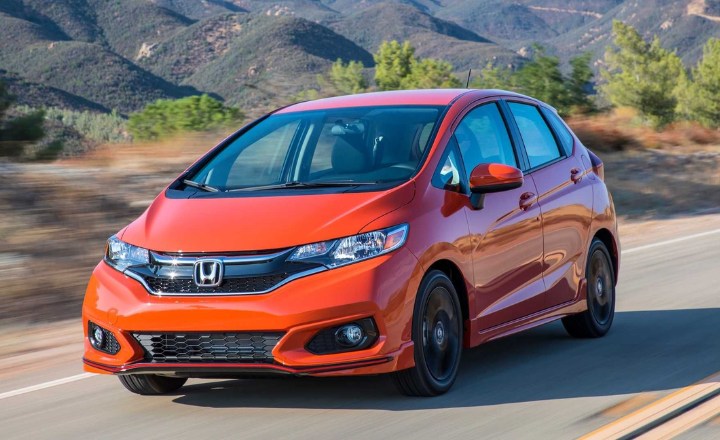
The sporty RS trim level brought a new level of athleticism to the lineup, attracting performance-oriented buyers who sought an exhilarating driving experience without sacrificing practicality.
In 2019, Honda further refined the Fit’s design by updating its front end with a more aggressive grille and stylish LED headlights.
Including the Honda Sensing safety suite as standard equipment raised the bar for safety in this segment while offering peace of mind to drivers in various road conditions.
With its youthful charm, practicality, and reliability, it’s no wonder critics regarded it as one of the best years for this beloved subcompact car.
The Neutral Years: 2018, 2020
The Neutral Years of the Honda Fit, from 2018 to 2020, presented a curious paradigm in the model’s evolution.
Despite not achieving the same remarkable success as its predecessors or successors, it managed to hold its ground as a reliable and efficient vehicle.
While some users reported minor electrical glitches, these issues were isolated and didn’t significantly affect the car’s overall reputation.
This period may have represented a plateau in innovation for the Fit, but it also exemplified its consistency and durability.
The Honda Fit still embodied qualities that appealed to pragmatic drivers seeking practicality over flashiness. It continued to offer excellent fuel efficiency, versatile cargo space, and nimble handling, all contributing to its enduring appeal.
The subdued performance during these years underscores how Honda prioritized reliability and user satisfaction over radical design changes or technological leaps.
The Worst Years: 2015
The 2015 Honda Fit faced a tumultuous year marred by quality control issues and safety recalls. Despite Honda’s efforts to address these concerns, the initial hiccups overshadow the car’s reputation.
This period saw heated discussions about the impact of these setbacks on customer trust and brand loyalty, as many questioned the long-term implications for Honda’s standing in the automotive market.
Amidst these challenges, a silver lining emerged in the form of heightened consumer awareness and demand for transparency from automakers.
The 2015 Fit saga underscored the growing importance of open communication and accountability in an industry where safety and reliability are paramount.
Honda Fit Average Resale Values
The Honda Fit has long been known for its practicality, reliability, and nimble handling, contributing to its substantial resale value.
The Honda Fit consistently holds its value well in the used car market. This can be attributed to its fuel efficiency, versatile interior space, and reputation for low maintenance costs.
The Honda Fit’s reputation for being a reliable, city-friendly vehicle with a touch of sportiness adds to its appeal among secondhand car buyers.

Honda Fit Reliability:
The Honda Fit is a standout performer with its impressive rating reliability of 4.5 out of 5.0. This rating speaks volumes about the consistent performance and durability that Honda vehicles are known for. Owners of the Honda Fit can have peace of mind knowing that their vehicle is built to last and withstand the test of time.
With its stellar reliability rating, the Honda Fit is a solid investment for those looking for a dependable and long-lasting compact car. From its efficient fuel economy to its agile handling, the Honda Fit is a reliable choice in the competitive subcompact car segment.
Conclusion
Certain models stand out for their reliability and performance. The 2008, 2011, 2012, 2016, 2017, and 2019 Honda Fit years have consistently garnered praise for their durability and fuel efficiency.
Avoid models from 2007, 2009, 2010, 2013, and 2015 due to reported reliability and quality issues. When shopping for a Honda Fit, prioritize these recommended years for a more satisfying ownership experience.
FAQ’s:
How Much does a Honda Fit Weigh?
A Honda Fit typically weighs around 2,500 to 2,800 pounds. The weight distribution may also differ based on the trim level and additional features included in the vehicle.
Which Honda Fit Years to Avoid?
The Honda Fit model years to avoid are 2007, 2009, 2010, 2013, and 2015. These years have been associated with transmission problems, engine malfunctions, and electrical issues. It is recommended that other model years be considered as a more reliable option.
